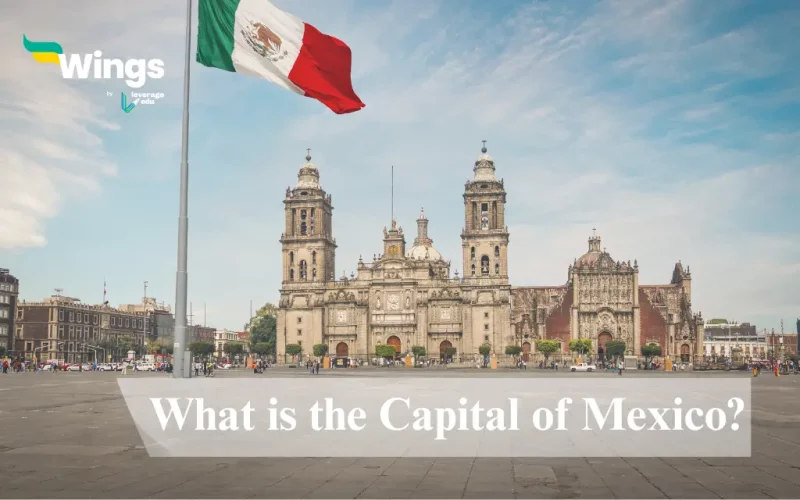The Capital of Mexico is Mexico City. It can refer to two things. The first is that it is the official capital city, and the other one is that it is the broader metropolitan area that includes the capital city and spills over into surrounding parts of Mexico state. Moreover, it is also known as Ciudad de México in Spanish. Additionally, this bustling capital is the most populous city in North America. It is a major cultural and financial hub which is situated in the Valley of Mexico on the country’s central plateau at a lofty altitude of over 7,300 feet. The city is divided into 16 boroughs, each further comprised of neighbourhoods. In this article, we will discuss everything about the Capital of Mexico, Mexico City.
Table of Contents [show]
Overview of Mexico City
Furthermore, here is key information about Mexico City that you should know!
| Feature | Description |
| City Nicknames | Mexico City, Ciudad de México (Spanish) |
| Status | Capital and largest city of Mexico |
| Population | 9,209,944 |
| Land Area | 1,495 square kilometers (577 sq mi) |
| Population | 21,804,515 |
| Metropolitan Area Rank | 6th Largest |
| Urban Agglomeration Rank | 2nd Largest (Behind São Paulo, Brazil) |
| Rank as Largest Spanish-Speaking City | 1st |
| GDP | $411 billion |
| Economic Significance (Mexico) | Generates 15.8% of national GDP |
| Economic Significance | 5th Largest Economy in Latin America |
Also Read: What Is The Capital City of Maharashtra?
History of Mexico City
Mexico City has two titles one being the oldest as it was founded in 1325 and the highest at a 7,350 ft metropolis in North America. Here is a brief history of Mexico City.
- Aztecs founded Tenochtitlán in 1325, the largest city in the western hemisphere then.
- Spanish conquered Tenochtitlán in 1521 due to misunderstandings and diseases.
- Mexico City was built on top of Tenochtitlán ruins, with a grid pattern and European style.
- In addition, the city flourished during the colonial period and is rich in architectural treasures.
Also Read: What is the Capital City of Bihar?
Geography and Demography of Mexico City
Mexico City sits in a high-altitude valley which is surrounded by mountains and volcanoes. This valley has no natural drainage, hence making the city historically prone to flooding. Moreover, canals and tunnels were built from the 17th century onwards to address this.
- The city itself rests on the former bed of Lake Texcoco which is an area prone to earthquakes and subsidence (sinking) due to the over-extraction of groundwater.
- This area has been densely populated since pre-Columbian times, and the urban area has grown significantly over the 20th century, thereby incorporating nearby towns.
Also Read: What is the Capital City of Punjab?
Culture and Economy of Mexico City
Mexico City’s economy is a powerhouse, generating nearly a quarter of Mexico’s GDP. Services are the major driver, followed by manufacturing. However, the informal sector also plays a significant role, with many residents working unreported jobs like street vendors or domestic help.
Culturally, Mexico City boasts a rich artistic heritage. The National Museum of Art and the San Carlos Museum showcase works from both Mexican and European masters. Moreover, the Academy of San Carlos which was founded during colonial times continues to be a prestigious art school today.
Also Read: What Is The Capital City Of Rajasthan?
Facts about Mexico City
With facts about Mexico City, we come to the end of this article. Let’s learn about some interesting facts!
- Mexico City holds the distinction of being both the oldest (founded in 1325) and highest major city (7,350 feet) in North America.
- Built on what was once Lake Texcoco, Mexico City was originally an island metropolis established by the Aztecs in 1325. Sadly, the Spanish conquistadors conquered and razed Tenochtitlan just two centuries later.
- Mexico City rests on a drained lake bed, and the constant extraction of groundwater has caused the city to slowly sink over time.
- Despite its challenges, Mexico City is a major economic powerhouse, generating nearly a quarter of Mexico’s GDP. The service sector is king, followed by manufacturing.
- Mexico City has a rich artistic heritage with prestigious institutions like the National Museum of Art and the San Carlos Museum showcasing works by Mexican and European masters. The Academy of San Carlos, founded during colonial times, is still a renowned art school today.
Related Blogs
FAQs
The real name of the capital of Mexico is Ciudad de México which is translated into Mexico City.
Mexico City is best known for its incredible history and culture. Mexico City is one of the oldest cities in the Western Hemisphere.
Mexicans speak the Spanish language. This is spoken by 90% of the population in the country, the rest 10% speak different languages.
Now we hope you are clear on what is the capital of Mexico. For more such content, visit our general knowledge page.
 One app for all your study abroad needs
One app for all your study abroad needs















 45,000+ students trusted us with their dreams. Take the first step today!
45,000+ students trusted us with their dreams. Take the first step today!
